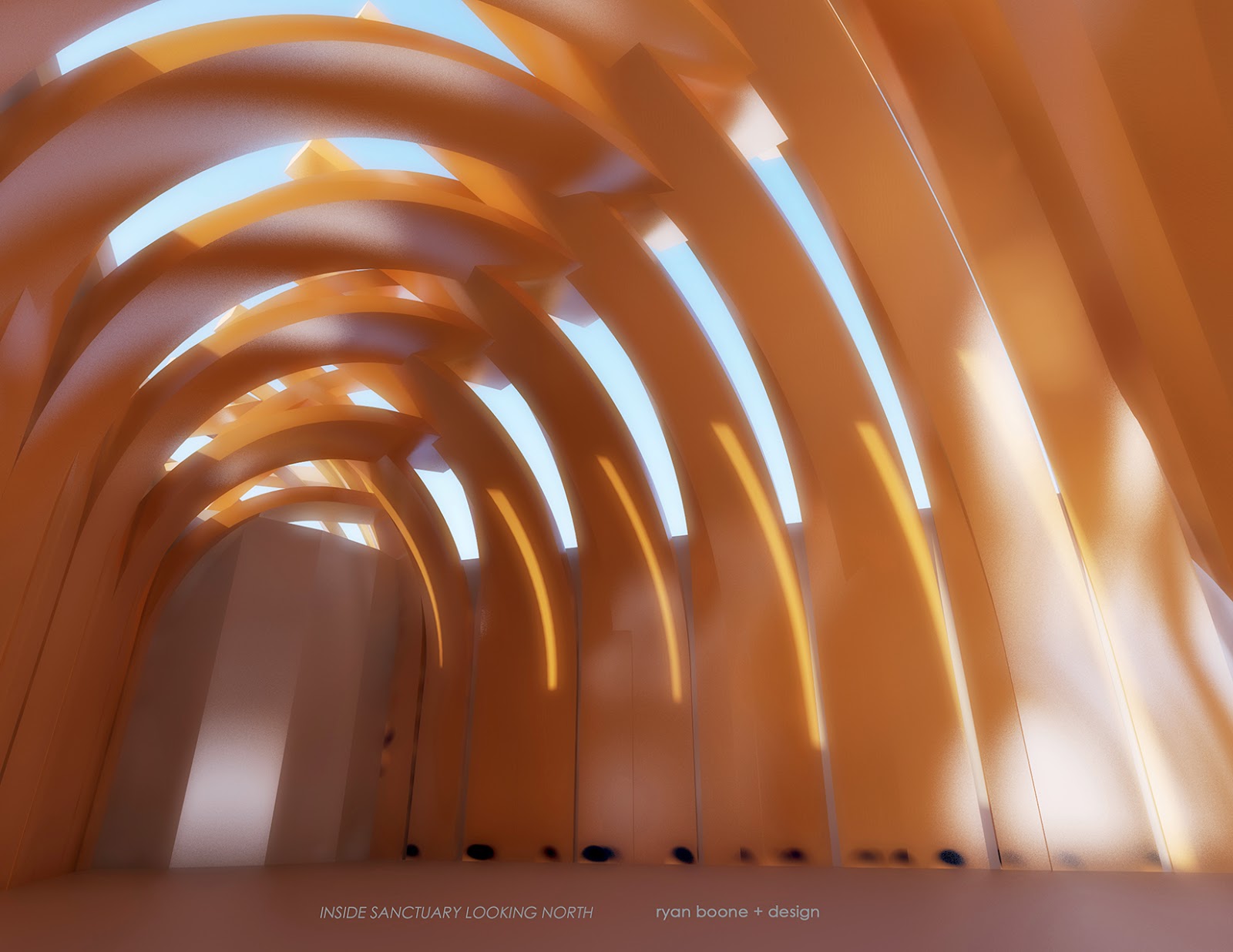
Honeycomb Chapel takes a new approach to sustainability by combining the tectonic/structural system with the lighting system. Composed of geodesic modules, this structure creates an environment which accommodates two distinctly different zones. By using smaller modules and increasing their depth, the natural daylight is funneled toward the center of the room and away from the perimeter. Standing in the center of the room, one can see through every wall, rendering the room transparent, however when located near the perimeter of the room, the walls appear opaque.


















